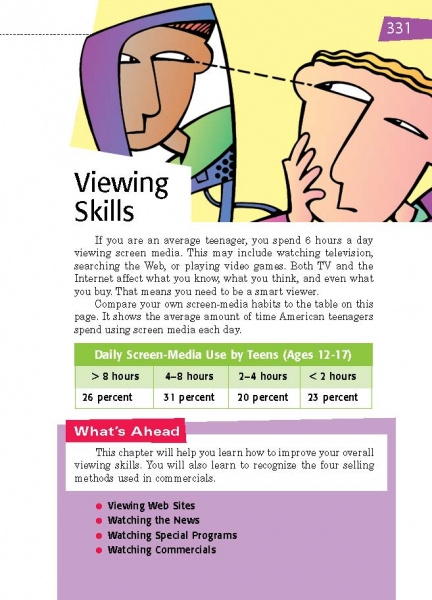Page 331 from

Start-Up Activity
Review the table on page 331 that shows the screen-media habits of teenagers in the United States. Pause and give students time to reflect on where their own habits fit on the table. Compare your students’ results with average American teenagers. Are your students’ screen-media habits similar to the average teenager?
Note that this chapter will show students how to view screen media with a close and careful eye.
Think About It
“Media literacy is not just important, it’s absolutely critical. It’s going to make the difference between whether kids are a tool of the mass media or whether the mass media is a tool for kids to use.”
—Linda Ellerbee

Start-Up Activity
Review the table on page 331 that shows the screen-media habits of teenagers in the United States. Pause and give students time to reflect on where their own habits fit on the table. Compare your students’ results with average American teenagers. Are your students’ screen-media habits similar to the average teenager?
Note that this chapter will show students how to view screen media with a close and careful eye.
Think About It
“Media literacy is not just important, it’s absolutely critical. It’s going to make the difference between whether kids are a tool of the mass media or whether the mass media is a tool for kids to use.”
—Linda Ellerbee


